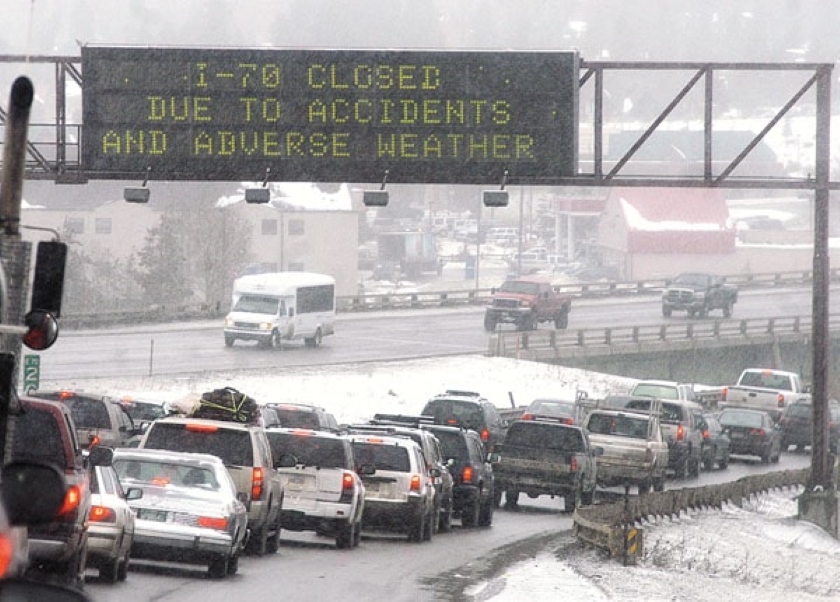
When the Eisenhower-Johnson Tunnel first fully opened to the public in 1979, it was the highest vehicular tunnel and one of the greatest feats of engineering in the world. An idea initially conceptualized over 100 years ago by William A.H Loveland, the first test bore through the Continental Divide came in 1943, thirty-six years before the tunnel would be finally completed. The project connects Colorado’s Front Range to its Western Slope via a 1.7-mile twin-bore tunnel under the Continental Divide, providing a significantly safer and more efficient route than the Loveland Pass alternative. The Colorado Department of Transportation recently celebrated “50 years of connecting Colorado,” with the tunnel seeing over 434 million passengers since its inception and cutting travel time down to five minutes through the Divide rather than 45 minutes over Loveland Pass. Yet, despite the unprecedented success achieved by this feat of engineering over the past 50 years, the “I-70 Problem” has reached a point of great concern.
Approximately 4,660 vehicles passed through the west-bound Eisenhower tunnel on opening day, March 8th, 1973. Today, the tunnel sees an average of 35,000 vehicles per day with up to 50,000 vehicles passing through on peak days. Safety measures and maintenance have been performed on the tunnel over the past few decades, but there are no plans to upgrade the capacity of the tunnel. CDOT representative Liz Viscardi says that they have “no plans to make these [capacity] expansions. A widened tunnel alone would cost billions of dollars.”
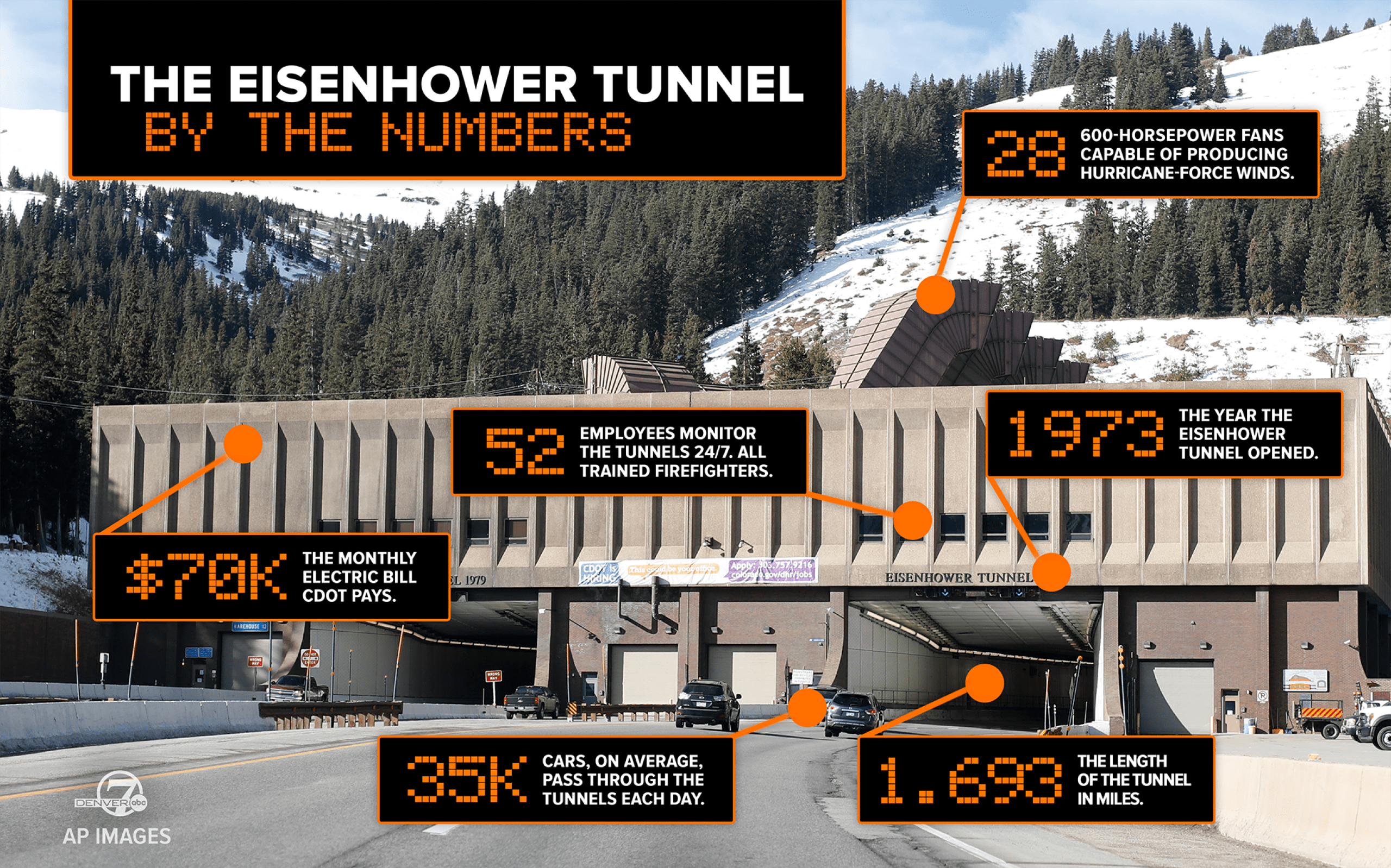
Last ski season, a massive storm system dropped 30+ inches of snow over Martin Luther King Jr. weekend and created an apocalyptic scene on the west side of the tunnel in Summit County. An already notoriously busy weekend, the complete closure of the tunnel along with many important mountain passes left people stranded overnight across the mountains, fighting for whatever supplies they could get their hands on. When the tunnel finally opened on Tuesday, other mountain passes across the state were still closed, funneling tens of thousands of people into the town of Silverthorne as they joined a queue to enter the tunnel that lasted up to six hours.
Storms of this caliber will always cause delays, but the I-70 problem often manifests beyond what is reasonable, even on clear days. The demand for travel through Colorado’s mountains has exceeded what is sustainably available. I talked to students at the University of Colorado at Boulder about their experience on I-70 and found that traffic has become a typical part of the experience. Beyond accounts of being stuck in Winter Park or Breckenridge overnight due to closures, my peers at the University overwhelmingly reported traffic as something to account for every time they make the approximately 80-mile trip to the ski resorts on I-70.
The drive takes no more than 90 minutes on a clear weekday but travel times over two hours are typical on weekends in the mountains. Some opt to leave well before sunrise or later into the day in order to avoid the morning rush, while others avoid the I-70 corridor completely in favor of a 40-minute bus ride to Eldora. The Colorado Department of Transportation, however, has been working hard to make the world-class resorts along the I-70 corridor more accessible for both locals and tourists.
One of the largest by CDOT in recent memory, the Floyd Hill Project will add another westbound lane at a critical choke point on I-70, reducing travel times by 20-50%. This additional lane will serve as a full-time, tolled express lane which starts at the top of Floyd Hill near Exit 248 and runs eight miles westbound to join the existing express lanes at the Veterans Memorial Tunnel.
The current I-70 Mountain Express Lane is a Peak Period Shoulder Lane instead of a full Express Lane, according to representatives from the Colorado Department of Transportation. “CDOT has an agreement with the Federal Highway Administration (FHWA) that limits the number of days the lane can be open to 100 days per year when the highway experiences the highest traffic congestion, primarily on holidays and weekends,” CDOT Representative Liz Viscardi said.
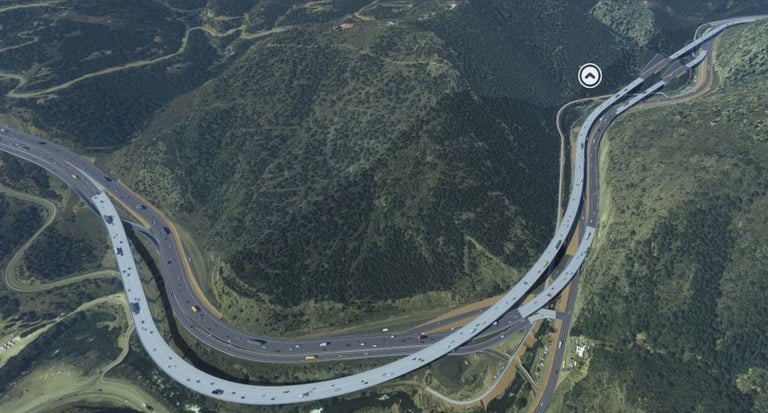
The full-time express lane designation of this project is key to providing consistent congestion relief to a continuous bottleneck on I-70. The new express lane toll prices have not been set yet, but revenue from the project is expected to be reinvested into additional infrastructure on I-70. Other benefits of the project include improvements and maintenance to the corridors’ bridges, on-ramps, grade scales, and environmental sustainability.
The Floyd Hill Project is expected to be completed in late 2028. Until construction is completed, traffic holds will be utilized on I-70 during non-peak times to maintain the safety of both workers and travelers. Project impacts to travel are as listed below:
- Westbound I-70 traffic held at Homestead Road, eastbound I-70 traffic held west of Veterans Memorial Tunnels
- Expect intermittent traffic holds on Central City Parkway, County Road 314, US 6, and US 40
- Expect several traffic holds daily Monday through Thursdays, 9 a.m. to 3 p.m., and Fridays, 9 a.m. to noon
- Plan for up to 45-minute delays. Delays could extend to 4 p.m.
This new project is one of the most significant since the aforementioned Mountain Express Lanes opened on I-70 in December 2015. Guided by a “Record Of Decision” document adopted in 2011 by CDOT and 27 other relevant stakeholders, the Floyd Hill Project was listed as a “specific highway improvement” in the document over a decade ago. The ROD outlines the minimum and maximum programs of improvement for a preferred alternative required to maintain the sustainability of the highway through the year 2050. Numerous transit improvements, highway improvements, and non-infrastructure-related components were assessed in creating the “multi-modal preferred alternative.”
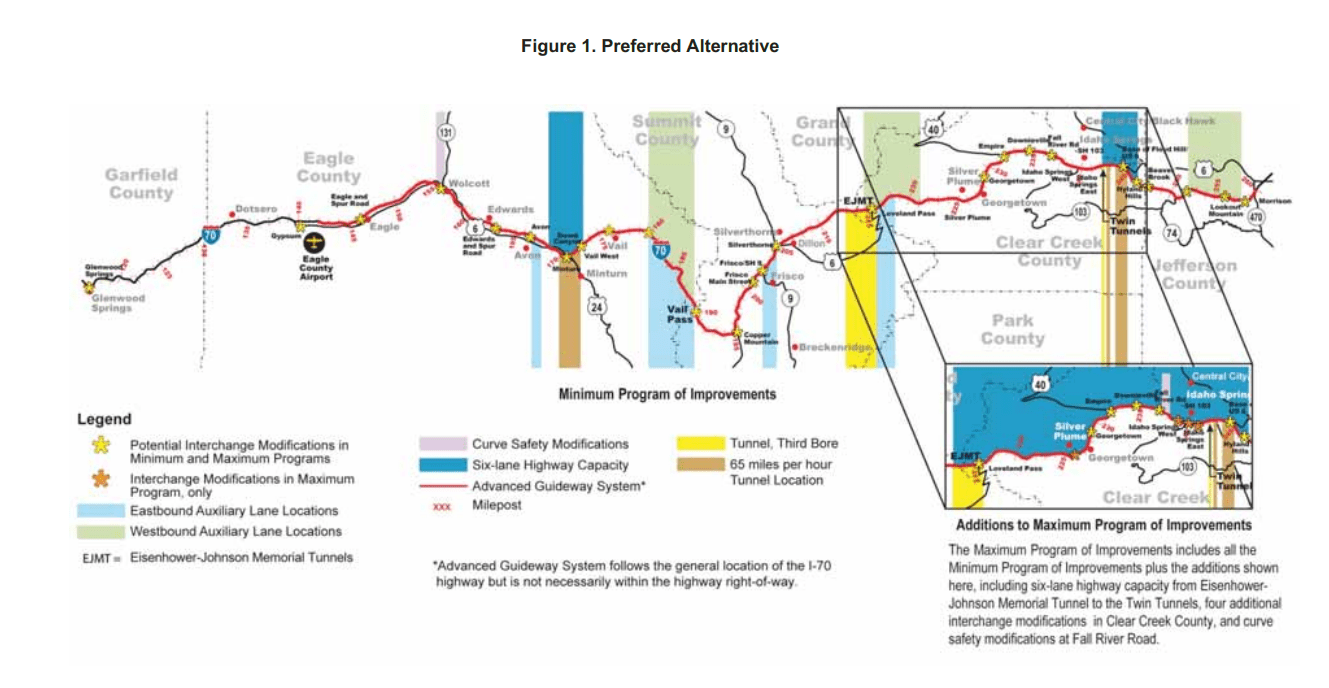
The multi-modal preferred alternative outlines three components to alleviate traffic on I-70 and prepare for projected demand through 2050. The most manageable parts of the plan are non-infrastructure-related components, which have already been tackled in large numbers. “The non-infrastructure related components focus on transportation demand management (TDM) strategies rather than building new infrastructure,” according to CDOT Representative Liz Viscardi.
CDOT says that these non-infrastructure related projects have been successful, increasing driver education and safety with minimal investment. Examples of successfully implemented non-infrastructure components outlined in the ROD include emphasizing improved traveler information, improving intelligent transportation systems, introducing new travel incentives, and the creation of driver education programs.
The second part of the ROD’s preferred alternative is highway improvements, which include the ongoing Floyd Hill Project. These improvements are categorized as “specific” or “other” highway improvements in the document. The Floyd Hill Project addresses many of the specific improvements, while other projects addressing the stretch of highway leading up to the Eisenhower-Johnson Tunnel from the east have faced obstacles to implementation.
The I-70 Westbound Bakerville to Eisenhower-Johnson Memorial Tunnel Climbing Lane Project would add a westbound auxiliary on I-70 between the Bakerville interchange to the east portal of the Eisenhower-Johnson Memorial Tunnels. An additional lane on this key bottleneck is a vital part of the ROD, but barriers have halted the successful completion of this component.
Work was started in 2022, but was paused until further notice in 2023 due to lack of funding. The project would greatly improve traffic flow into the notorious bottleneck, while also improving access to Loveland Ski Area, Arapahoe Basin, and popular hikes such as 14,000-foot peaks Gray and Torreys. There have been no recent updates on the project, but CDOT says the project will remain on its 10-year improvement plan while opportunities for funding are explored. Perhaps additional revenue from the new express lane will help to resume work on these projects. Other highway improvements include truck operations such as pull-offs and chain stations, additional auxiliary lanes at choke points such as Vail Pass, and interchange improvements in towns on the I-70 corridor.
The final aspect of the ROD is the implementation of a new transit alternative, the “Advanced Guideway System.” The AGS is a conceptualized mass-transit train system that is described as a central part of the preferred alternative. The route would connect Colorado’s Front Range to the mountains through a route that vaguely follows the I-70 right of way, with tunneling and regrading necessary in some areas of the corridor. While the ROD strongly recommended the AGS, the document conceded that additional information is necessary to advance the implementation of an Advanced Guideway System in the corridor. Additional research surrounding financial and technological feasibility, land use and location considerations, governance, alignment, ridership, and interface with existing and future infrastructure was necessary to move forward with the project.
Studies were performed using funds from CDOT’s Division of Transit and Rail, and the 2014 AGS feasibility study was released in August 2014. After multiple years of research and in-depth analysis of factors such as available technology, route alignment, and funding, CDOT developed a position that has been maintained for the past decade. Researchers concluded that although the available technology and identified route alignment exceeded the criteria, the financial feasibility of the AGS project was insufficient. No local, state, or federal funding sources were identified, and private funding capabilities were too low in order to complete such an expensive and risky project. The study did not rule out the AGS for good, stating that the project was solely infeasible from a funding perspective and should be kept in the long-range Colorado State Freight and Passenger Rail Plan.
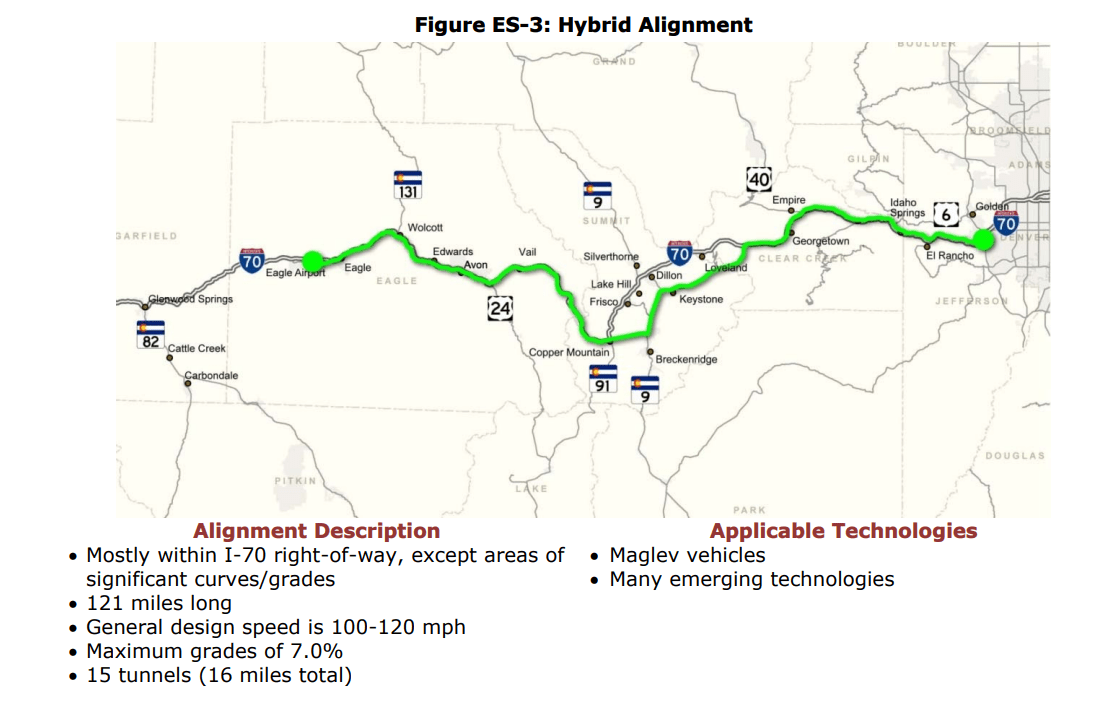
Funds have not been identified, and the status of the AGS project remains the same as a decade ago. CDOT has not given up on rail transit, though, with significant improvements and expansion to the existing Winter Park Express line recently announced. Started on January 9, 2025, the Winter Park Express now operates five days a week, Thursday-Monday, with significantly reduced starting one-way prices of $19 for adults and $9.50 for children. Not only has this service greatly increased accessibility to USA Today’s three-time #1 resort in North America, Winter Park, but CDOT has also announced a preliminary design and planning project for an expanded Colorado Mountain Rail System.
This Colorado Mountain Rail System project would extend the existing rail line from Winter Park to Steamboat Springs and even further into the town of Craig. The project is in its initial stages, with public opinion and service development plan (SDP) analysis being completed through 2024. The proposed plan will add stops between Winter Park and the Denver Union Station, in the city of Arvada and the town of Rollinsville. It will also extend the rail line past its current western terminus of Granby, servicing stops in Kremmling, Steamboat Springs, Craig, and the Yampa Valley Regional Airport. This project will alleviate I-70 traffic to the Northern Mountains while providing an important precedent for development of the AGS.

With the financial restraints of mass transit on I-70, CDOT has instead employed the use of the popular Snowstang and Pegasus services. The Snowstang is a 51-person coach bus operated by CDOT that provides round-trip service to Copper Mountain, Arapahoe Basin, Loveland Ski Area, and Breckenridge for $25. The Snowstang is not able to operate on the narrow Mountain Express Lanes, but it is expected to utilize the new Floyd Hill westbound express lane once it is completed. Looking to utilize these mountain express lanes, CDOT also launched the Pegasus service in 2022, employing smaller vans with more frequent service and greater flexibility.
CDOT says that the Advanced Guideway System (AGS) identified in the ROD will require significant resources that must be acquired over an extended period of time. In the meantime, CDOT has launched Bustang transit services along I-70 that serve communities along the corridor and direct service to ski resorts in the winter via Snowstang. These services have steadily grown in popularity, with many service investments made in the last several years.
The use of these transit alternatives has both alleviated traffic on I-70 and improved general accessibility to the mountains, but the AGS and other large pieces of infrastructure need to be developed in order to achieve the minimum program of improvement defined in the ROD. Although not directly on the I-70 corridor, resorts such as Aspen have begun to set precedents for traffic mitigation as demand increases. The Roaring Fork Transport Association has developed the country’s first rural bus rapid transit system, connecting Glenwood Springs on I-70 to Aspen and other communities in the valley. The BRT project in Aspen has been highly successful, but frustration with the system’s lack of infrastructure remains.
“There was a huge fight over a train years ago, you can dig it up in the archives, and that was when the community landed on BRT.,” Auden Schendler, SVP of Sustainability at Aspen said. “Yes, electric rail is obviously far better. But the U.S. is broken when it comes to infrastructure. Partly, frankly, because of environmental laws.”
As numerous sustainability issues threaten the future of the ski industry, many structural barriers continue to block the path to innovation. The ten-year anniversary of the AGS Feasibility Study has come and gone, and it has become clear that important work on infrastructure has been hampered by institutional shortcomings. Colorado’s gas tax hasn’t been raised in over 20 years and federal funding remains low, meaning CDOT can barely cover its operating and maintenance expenses, let alone take on new long-term projects. Public awareness, federal grants, and other resources have allowed CDOT to be more successful with these projects recently, but a structural revolution is necessary to implement mass transit and solve the I-70 problem for good.
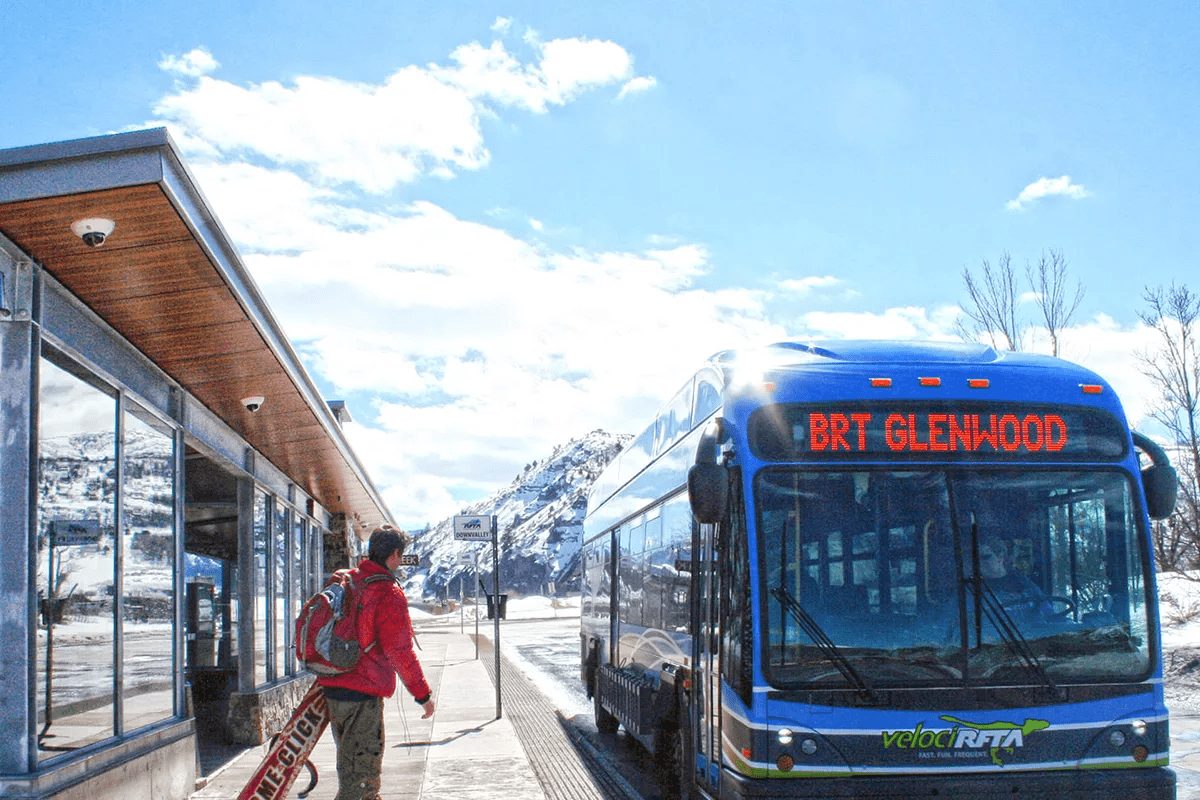
My neighbor was involved in the construction of the tunnels. He said that for an extra 10% of the construction costs, the tunnels could have been built as 3 lanes vs the current 2 lanes each direction. Colorado declined. What do you think it will cost to widen them today?
As a life long Colorado resident, Vail (aka Fail) Resorts should be at the top of the list for the cause of the Top Ten worst traffic in the US with all the clowns driving to Vail (Fail), Breckenridge (Broken Ribs), and Keystone (Ski Stoned).
Like most of the problems in Colorado, Vail is at the top of the list for reasons why they are problems in the first place. Before the Epic Pass became available, traffic was sort of an issue on the weekends but nothing on the scale that it is nowadays. Thank God I don’t live anywhere near I-70 anymore but the few times I was dumb enough to go ski in Summit county a few years ago, we left early in the morning before sunrise and still didn’t get on the slopes until after noon and even when you get there, it’s a suffer-fest sitting in 20-30 minute lift lines and everything is crowded, even the hike-to, off-piste terrain. There is nothing that could ever convince me to ever ski in Summit County ever again. As the bumper sticker so eloquently puts it, “Friends Don’t Let Friends Ski I-70” Glad to hear that the State is trying to do some things to alleviate some of the traffic but it’s going to take some act of thinking way out of the box to fix this issue. I feel bad for the OTR Truck Drivers the most because they are just trying to do their jobs and I-70 is a major cross-country route yet they have to sit in hours-long traffic jams on the weekends because of this issue.
Even traffic on Friday afternoons is terrible now. It took an extra hour to drive from Denver to Breckenridge last Friday departing at 4 pm in clear weather. Sometimes there are even mile long backups just to exit 6th Avenue to get onto I-70 and that started a few years ago on weekend mornings, but now happens on Friday afternoons.
On weekends with terrible traffic, many just give up and turn around and go back to Denver when traffic comes to a standstill before Idaho Springs.